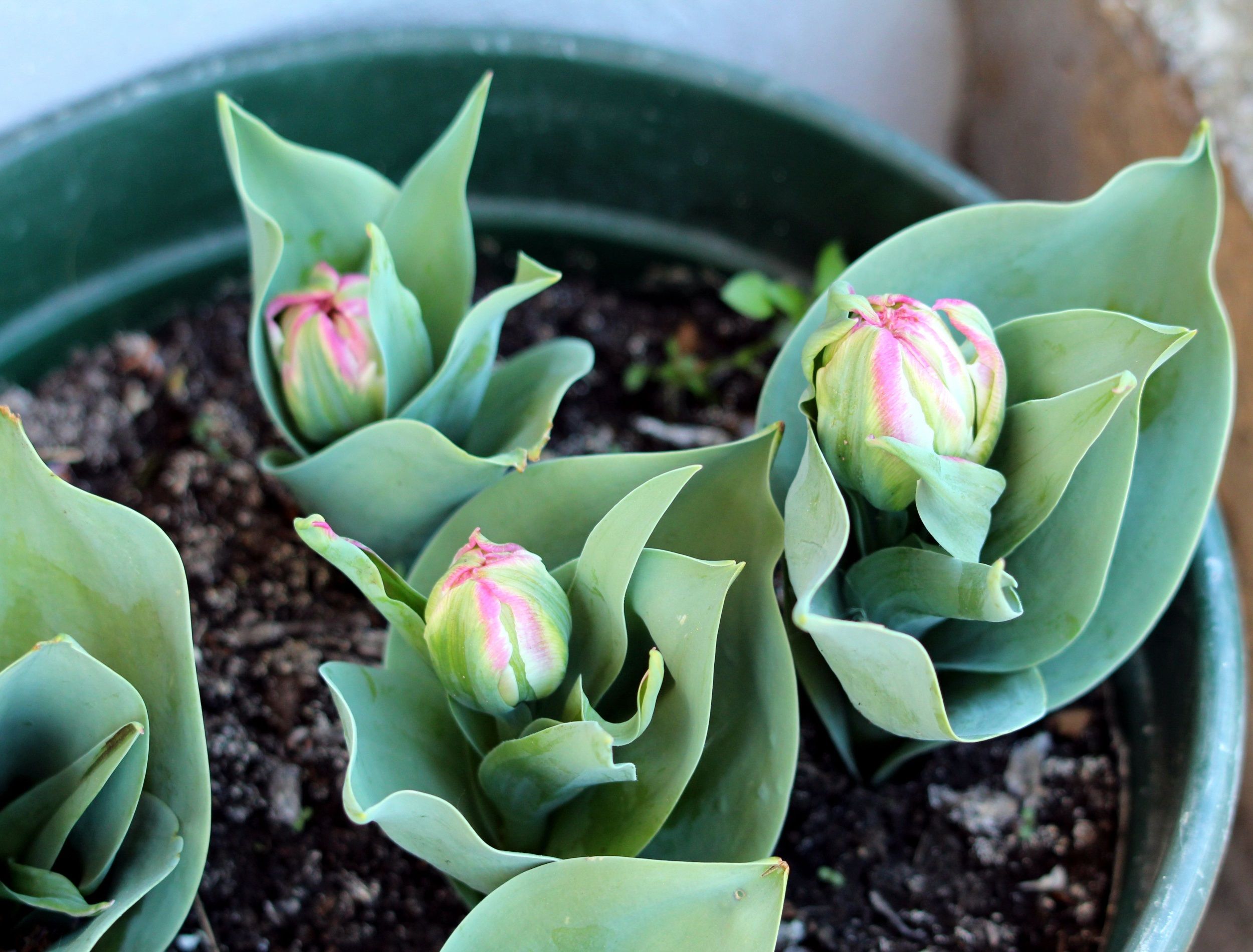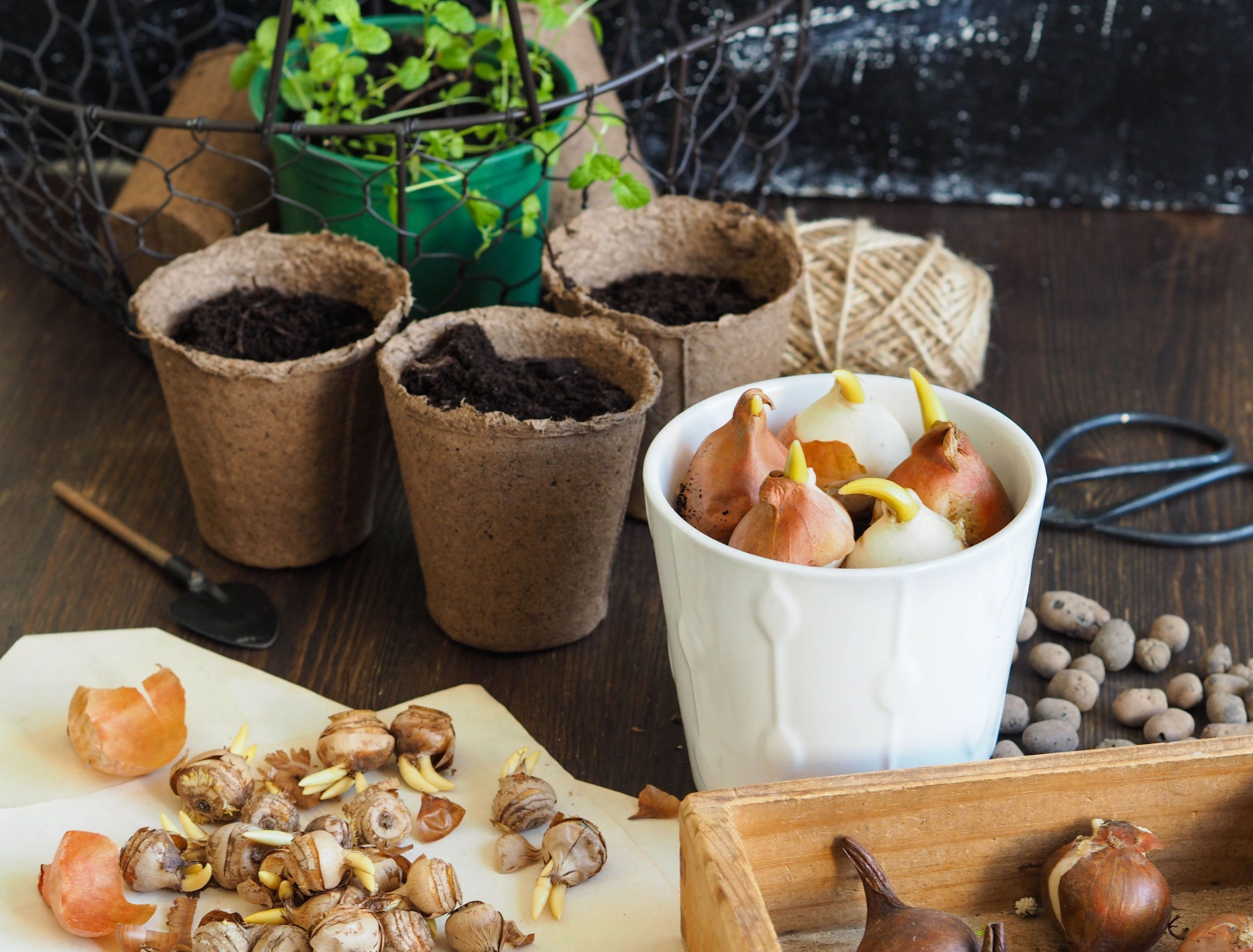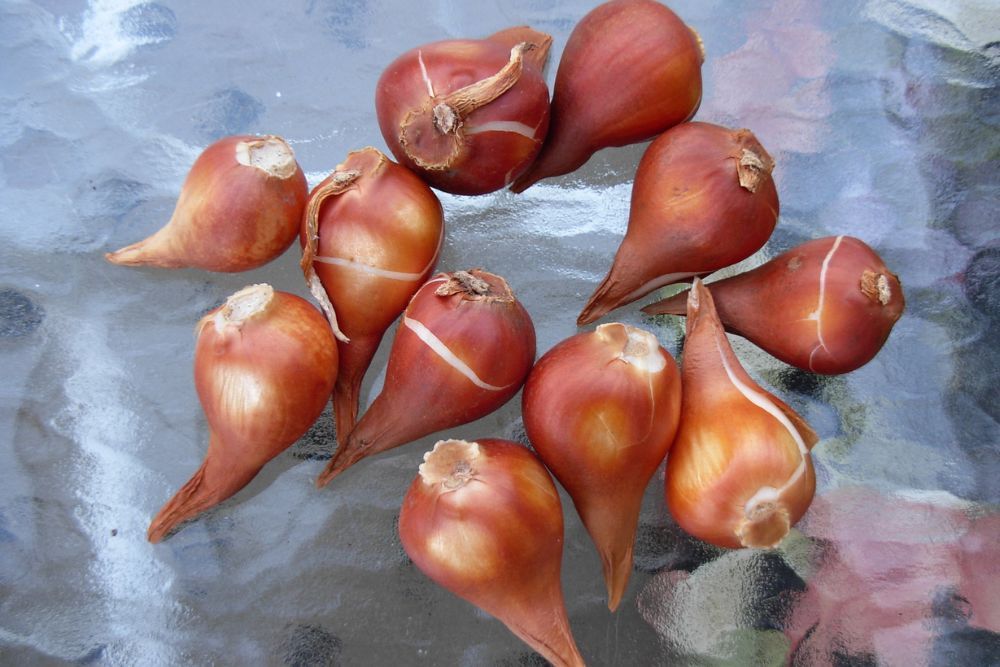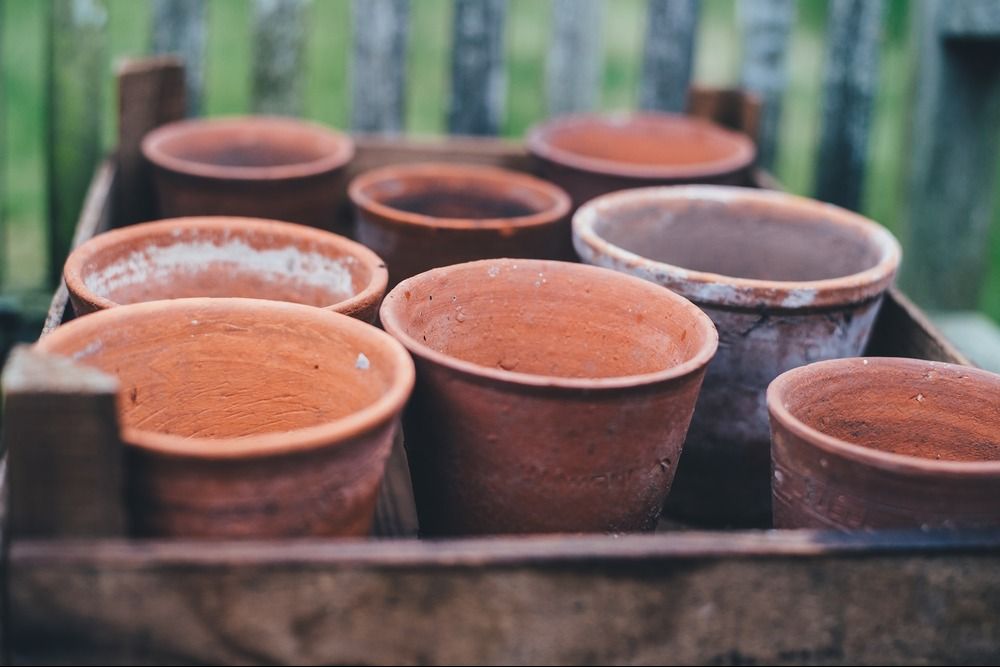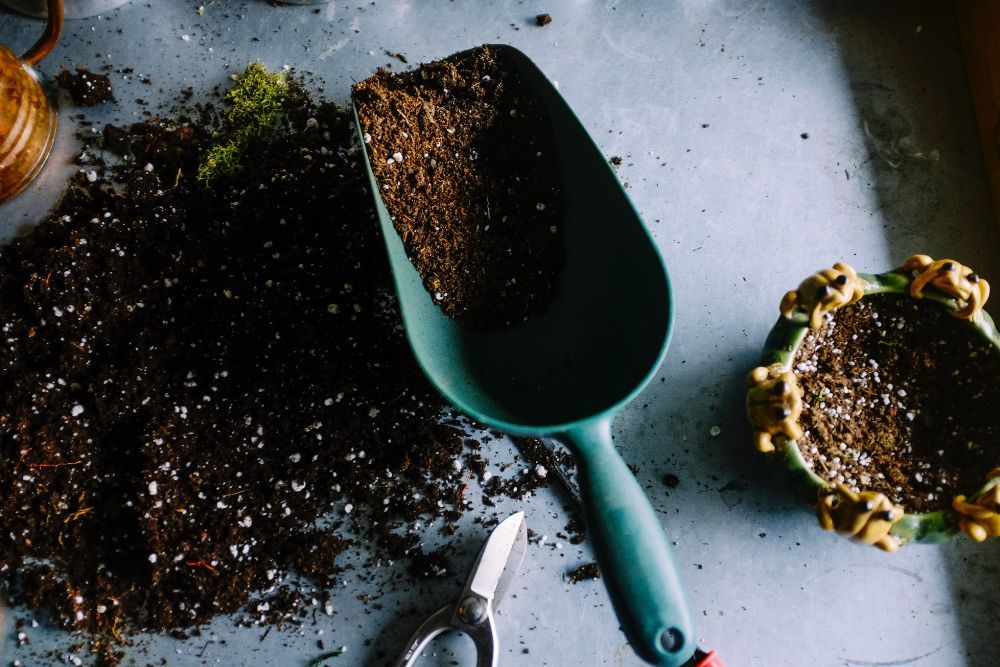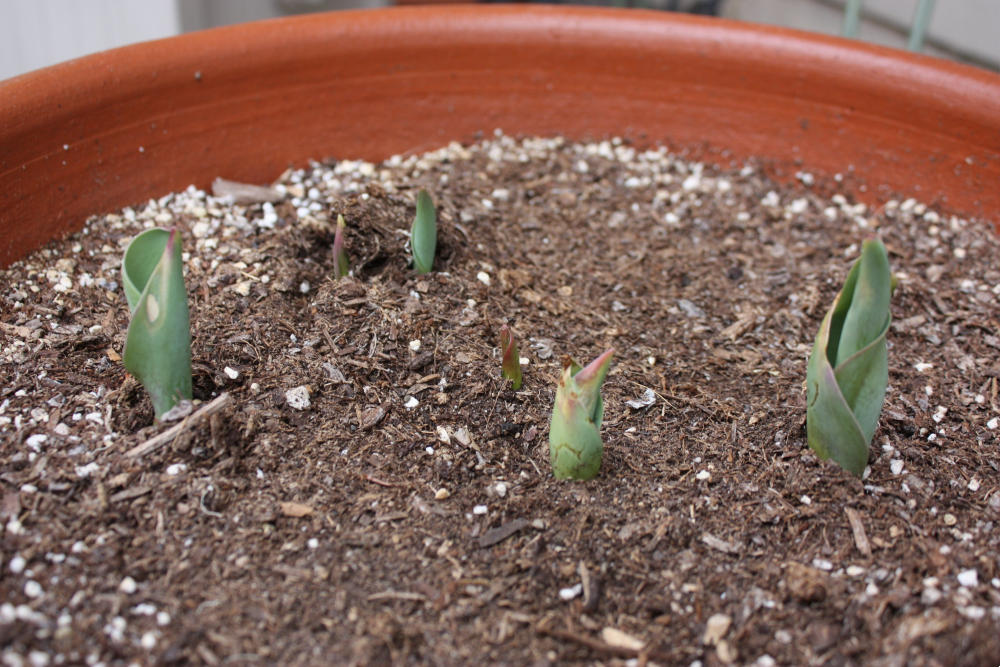Tulips (Tulipa) begin blooming outdoors in spring and are some of the first flowers to bring color after the winter season! These happy blooms come in a wide array of colors from solid to mixed-color cultivars. While typically a springtime flower, potting tulips (called "forcing") allows for enjoyment at other times of the year. Choose your favorite from around 3000 species of perennial varieties and bring that springtime happiness into your home!
To achieve success with potted tulips, there are a few tips and tricks to consider. Take a look at this checklist and set yourself up for beautiful potted blooms!
Materials Required
Image credits: Sentelia via Shutterstock
Use this list of materials to help you force blooms from potted tulips!
- Pot
- Spade
- Soil
- Sand
- Peat moss
- Tulip bulbs
- Cold storage
1. Choose Your Bulb
Image credits: Brewbooks via Flickr
Bulbs are like little packages containing the energy and starts of new plants, instead of seeds. These storage units come in either hardy (spring blooming) or tender bulb (summer blooming) varieties. Tulips come from hardy bulbs that require a cold environment to wake them up for blooming!
To get the best chance of success, choose the largest bulb and inspect for any signs of disease or distress like cuts or softness. Tulip cultivars such as 'Triumph,' 'Single Early,' and 'Double Early' are good for forcing.
2. Select Your Pot
Image credits: Annie Spratt via Unsplash
When fully grown, tulips have tall stems that need a supportive base to make sure they do not fall over. Choosing a pot with a wide bottom and good drainage is the best option! Give bulbs 2 to 5 inches of space, depending on their size. For example, a 5-inch diameter pot provides enough space for about four bulbs.
3. Choose the Soil
Image credits: Neslihan Gunaydin via Unsplash
Soil is so important and the requirements differ from plant to plant. For potted tulips, use a mixture of sand, soil, and peat moss in equal parts. This mixture provides nutrients and minerals, as well as great drainage to keep water moving through without bogging the medium down.
4. Plant the Bulbs
Image credits: ohefin via Creative Commons
With a proper pot and soil in hand, it is now time to set the stage!
Fill the pot with the appropriate soil mixture and position the bulb onto the soil, with the flat side facing the wall of the pot. Proper positioning helps to ensure the leaves grow out over the rim of the pot.
Then, cover the bulbs with soil, leaving the tip exposed. Keep the soil line at about 1.5 inches from the rim of the pot. Water the bulb until water runs out the bottom drainage holes.
5. Chill Out!
Image credits: Marcus Winkler via Unsplash
Hardy bulbs require a period of cold temperatures to break the dormancy and make blooms! Once the tulip bulbs are in the soil, store the pot in a dark location with temperatures of 40 degrees to 50 degrees Fahrenheit. A secondary refrigerator or root cellar are great options for these tulip pots. Keep the pots watered and cool for around 12 to 16 weeks and watch the roots start to emerge.
6. Time to Shine
Image credits: Ewen and Donabel via Creative Commons
After completing the requirements for forcing bulbs, it's time to gradually bring the tulips back to warmer temperatures and light!
Yellow shoots should be showing when the pots come out of the cold storage. Before you move them in the sun you need to adjust their conditions and place them in a room that is still cooler (about 50 to 60 degrees Fahrenheit) with low to medium light.
After four to five days, these yellow shoots should now be green! Once this occurs, move the pot again to a warmer location like a bedroom window or sunny porch, that has plenty of light and temperatures of about 60 to 70 degrees Fahrenheit.
7. General Care
Image credits: New Africa via Shutterstock
Keep your potted tulips watered and occasionally turn the pot to allow for even sunlight and healthy growth. In general, the tulips bloom three to four weeks after they finish the cold storage. At this point, it is time to sit back and enjoy those bright and cheery spring blooms!
Although, make sure you enjoy them while they last! Tulip blooms only last about two weeks.
Potted Paradise
Potting tulips are a great way to enjoy these springtime blooms at other times of the year! Forcing tulips is attainable for even the greenest of thumbs and following a few simple steps will have those potted tulips blooming in no time.
From choosing the right bulb and soil necessary for tulips to fulfilling the cold requirements, with smart moves and minimal effort, the tulips will be yours to enjoy.
Do you enjoy potting tulips? Share your favorite types of potted tulips in the comment section below!

